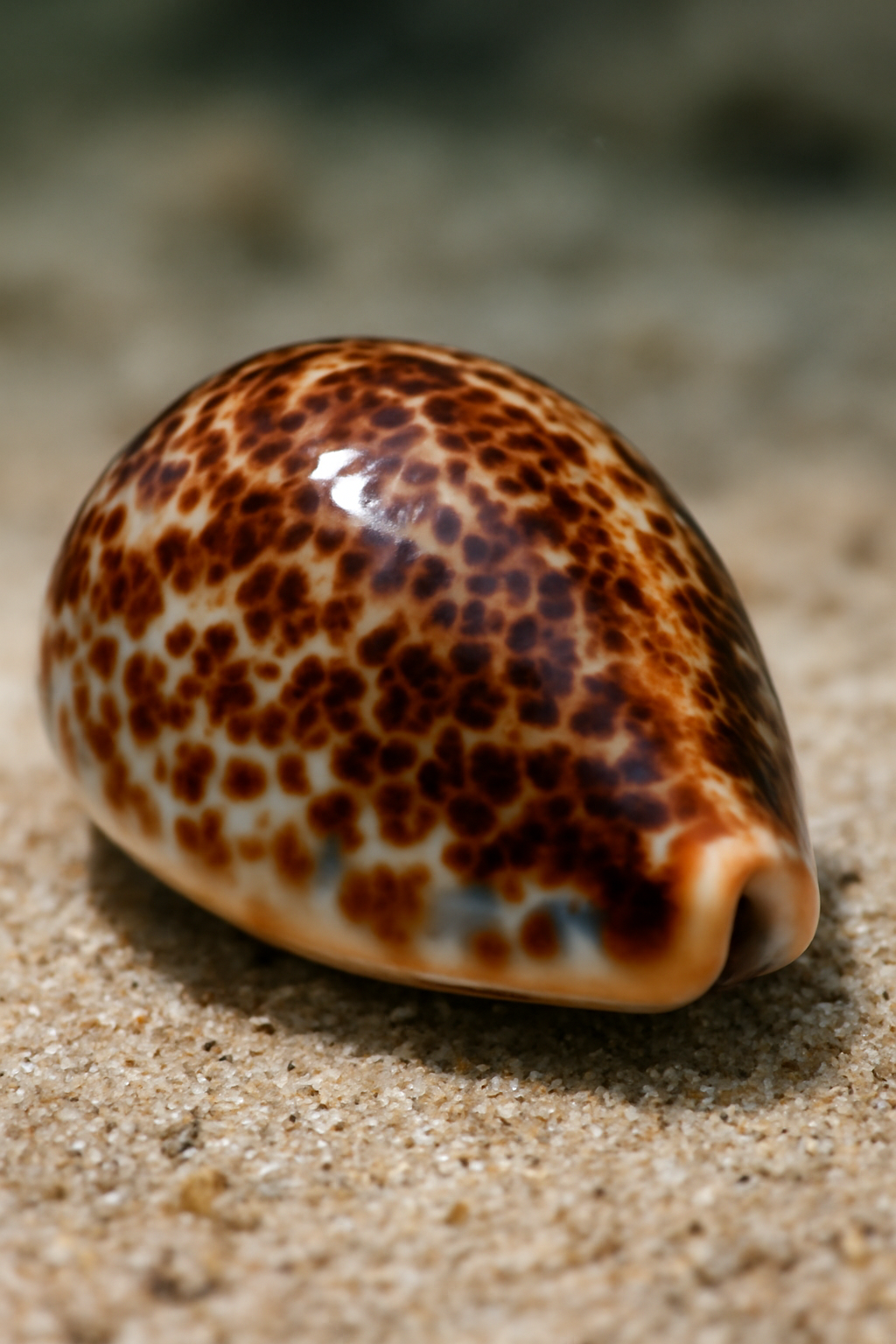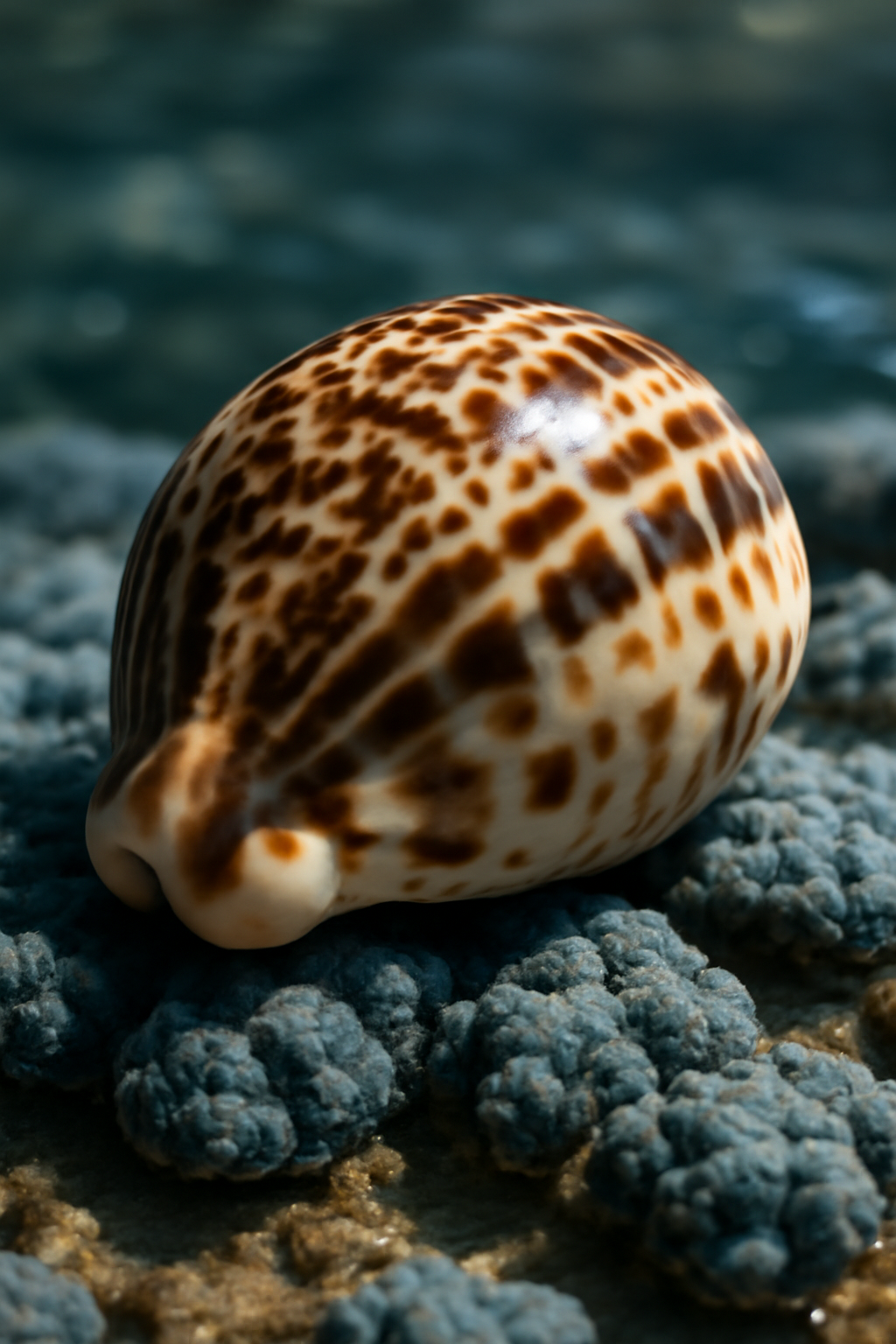Cypraea: The Cowry Shells – Morphology, Classification, Habitat, and Ecological Importance
Cypraea is a prominent genus within the family Cypraeidae, commonly known as cowries, characterized by their glossy, smooth, and often vibrantly patterned shells. Cowries have fascinated humans for centuries due to their unique aesthetics and cultural significance as currency, jewelry, and decorative objects. The genus includes many species inhabiting tropical and subtropical marine environments where they play crucial roles as grazers and detritivores on coral reefs and rocky substrates. Their distinctive shells result from a highly evolved mantle that envelops the outer shell surface when the animal is active.
Classification of Cypraea
| Taxonomic Rank | Name | Characteristics |
|---|---|---|
| Kingdom | Animalia | Multicellular eukaryotic organisms |
| Phylum | Mollusca | Soft-bodied animals with a muscular foot |
| Class | Gastropoda | Snails and slugs with coiled or uncoiled shells |
| Subclass | Caenogastropoda | Large diverse group including many marine snails |
| Order | Littorinimorpha | Characterized by marine snails with varied shell forms |
| Family | Cypraeidae | Cowries with smooth, shiny, and often colorful shells |
| Genus | Cypraea | Cowry genus with highly polished, ovate shells and narrow apertures with teeth |

Habit and Habitat
Cypraea species inhabit warm tropical and subtropical waters, frequently found on coral reefs, rocky outcrops, and sandy bottoms near reefs. During daylight hours, cowries often hide under rocks, reef crevices, or coral rubble to avoid predators and only emerge at night for feeding.
They sustain themselves mainly by grazing on algae, sponges, and coral polyps and occasionally consume detritus or sessile invertebrates. Cowries’ behavior and shell morphology contribute to efficient movement and survival in complex reef environments.
Geographical Distribution
The genus Cypraea is widely distributed in Indo-Pacific tropical waters and some Atlantic and Mediterranean locations. The biodiversity hotspot lies in the Indo-Pacific, which harbors the majority of extant species. Notable species such as Cypraea tigris are found in the Indo-Pacific coral reefs, while others have more restricted or specialized ranges.

General Characteristics
- Commonly called as cowry.
- Dorsal side is convex and the ventral side is flat with a narrow longitudinal opening extending along ventral length of the shell in the form of toothed channel or shell aperture.
- Solid shell is very smooth, polished and often highly coloured. Spine often concealed by the last whorl.
- Mantle and the foot are more beautiful.
- Lateral folds of mantle are reflected over the shell and may completely cover it.
- In entire expanded anima! a pair of eyes, tentacles, pallial tentacles, foot mantle and siphon are easily seen.
- Shell Morphology: Glossy, ovate shells with flattened ventral sides, no visible spire, and an elongated narrow aperture lined with tooth-like projections.
- Shell Size: Varies considerably, from a few centimeters to over 15 cm in larger species.
- Color and Pattern: Shells display an extraordinary variation in patterns including spots, stripes, and mottling in colors such as white, brown, orange, black, and pink.
- Mantle: The living mantle covers the entire shell surface when active, secreting calcium carbonate and maintaining the shell’s glossy finish.
- Foot: Broad and strong, aiding crawling and attachment.
- Sensory Organs: Eyes at the base of two tentacles, with chemoreceptors for environment sensing.
- Respiration: Gills under the mantle cavity facilitate gas exchange.
Special Features
- Shell Gloss: The enveloping mantle helps maintain the shell’s polished surface, a trait unique among many gastropods.
- Teeth Along Aperture: Internal shell lip hosts distinct ridged ‘teeth’ important in identification and protection.
- Camouflage and Warning Patterns: Some species exhibit shell patterns that blend with reef environments or warn potential predators.
- Reproduction: Most are dioecious with external fertilization; some species exhibit brooding.
- Juvenile Differences: Juvenile shells often differ markedly in coloration and form from adults.
- Economic and Cultural Significance: Cowries are prized for jewelry, artifacts, and currency by various ancient cultures.

Identification
Identification involves:
- Detailed analysis of shell shape, size, surface texture, and coloration patterns.
- Aperture shape and tooth count.
- Mantle morphology in living specimens.
- Molecular markers are used increasingly to resolve species and complex groups.
- Distribution and habitat specificity provide field identification clues.
Life Cycle and Reproduction
Cypraea species reproduce sexually with separate sexes. Gametes are released into the water column where fertilization occurs externally. The resulting larvae are planktonic veligers that undergo several developmental stages before settlement.
Developmental timing and success are influenced by factors such as temperature, salinity, and food supply. Juveniles initially differ in shell coloration and patterns until maturation. Cowries generally have moderate longevity, with life spans ranging from a few to several years.
Ecological Role and Importance
- Grazers: Manage algal growth and interact with coral reef communities.
- Microhabitat Shaping: Through grazing and movement, influence the spatial distribution of sessile organisms.
- Prey: Serve as food for fish, crustaceans, and humans.
- Bioindicators: Sensitive to changes in water quality and reef health.
- Cultural Influence: Historically significant as currency and ornamentation, representing an intersection of natural and human history.
References
- https://en.wikipedia.org/wiki/Cypraea
- http://www.marinespecies.org/aphia.php?p=taxdetails&id=216843
- https://en.wikipedia.org/wiki/Cypraeidae
- https://www.marinespecies.org/rest/AphiaIDByName/aphia.php?p=taxdetails&id=1659098
- https://www.app.pan.pl/archive/published/app70/app012452025.pdf
- https://www.britannica.com/animal/Cypraeacea
- https://www.gbif.org/species/4360773
- https://www.gbif.org/species/4360837
- https://zookeys.pensoft.net/article/90917/
- https://www.britannica.com/animal/Fissurella
- https://www.inaturalist.org/taxa/64147-Fissurella
